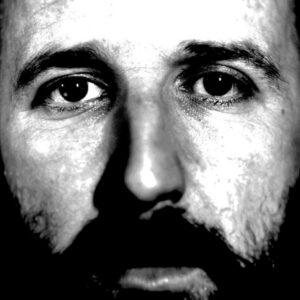I create objects using various materials. However, I mainly work in metal, which gives me an unlimited field of expression and, despite its apparent austerity, is very malleable. It can manifest itself as this heavy, severe or, on the other hand, very subtle, light and free. Working with this material is a constant participation in the process of clashing elements. On the one hand there is fire – high melting point as an inherent aspect of steel processing, and on the other hand there is water, moisture that clearly affects the rusting process. There are chemical mixtures, cooling, which simultaneously hardens the metal, and, above all, the rust itself, which is iron oxide, and thus another element – air. There is the earth from which iron ore comes. So all the elements can be found here. How we use these elements, or a mixture of them, will impact what we will call the work of art in the final phase of the creation process.

Michal Malinowski, born in 80, self-taught artist – he likes and needs to create. His main medium is metal – the raw one, processed only by the steel mill but also the one touched by time, rusted. In his installations he uses steel rods to create spatial sketches, rather largesized wall sculptures, telling everyday situations from a slightly different angle. He is fascinated by the human body, its straight lines and curves, gestures, communication with the body, as well as the human psychological condition and its shades in the context of everyday reality. His works are sometimes simple stop-frames of everyday situations, and sometimes deep reflections on mental states. Sometimes grotesque. He describes the world with the eye of an inquisitive observer, but thanks to the peculiar universality of the form of the message, he leaves the viewer space for his own reflections, and sometimes only gently reminds us of something, using thin lines and leaving the form open, openwork. He persuades with his sculptures to “stop” for a moment to look at seemingly simple situations once again, he deals with what arises from the clash of ordinary everyday life with the world of abstraction as a field of expression. There is a lot of geometry in his works – shapes, geometric figures are meant to simplify, close the form, explain the inexplicable.
Thanks to the spatiality of these sculptures/pictures, an important role is played by the aspect of playing with light, as most of the works are created to cast a shadow. This play with shadow, which gives the whole a specific character, has different faces, depending on the light used.
Malinowski takes a completely different approach to works marked with iron oxide. In the rust medium, the color (rust) and its facets seem to be of great importance. The subject range, which, however, is united by a common denominator – time – is considerable. In some works one can sense the weight of the struggle with matter and the weight resulting from the medium itself. Objects collected from junkyards, waste and everyday objects tell certain stories, and woven into uniform, often flat spaces (“stretches of sheet metal”), complete the work. In opposition to this, other works manage to be light despite the medium, there is a strong sense of organicity, references to sequences of patterns from the natural world. The rusting of raw material is often a kind of controlled accident – the process is stopped at the right moment. By force, the colors of the rusted forms have more references to painting than drawn forms, as in his wire sculptures. The objects are no longer so openwork-like, and the space looks completely different here.
However, the artist does not abandon geometry, which still seems to be of great importance to him in the context of exploration, closing the composition. The direction of work here is no longer so obvious, and intuition, which is an important aspect in the process of creative struggle with rust, rather comes to the fore.
Rust can be difficult to tame, which makes it sometimes ungrateful, marked by exuberance, not easily tamed. Many of his works in this category insist on living on after the creative process is over. Many of the artist’s works are enclosed in oval forms. The triangle and circle seem to dominate here, to leave the form open at other times. Rather, the works have frames enclosed in the aforementioned shapes.